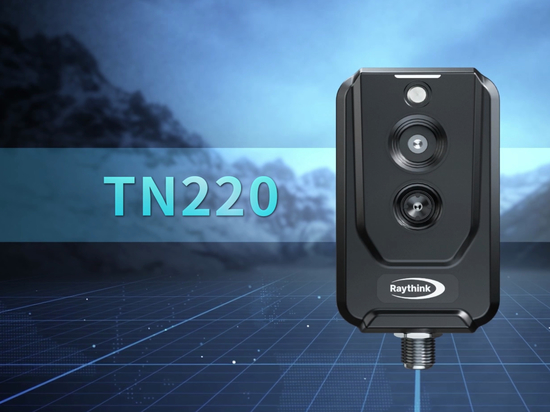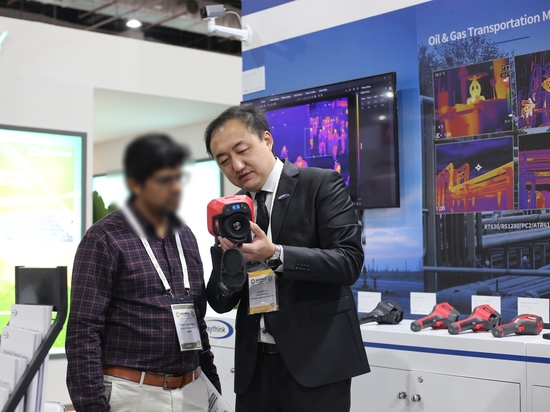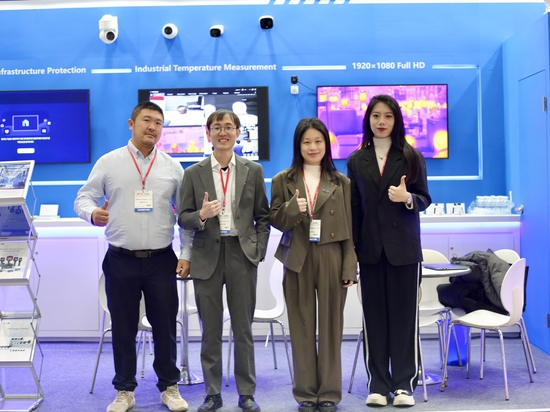
#Industry News
Troubleshooting HVAC Systems with Thermal Imaging Cameras
Troubleshooting HVAC Systems with Thermal Imaging Cameras
Thermal imaging has become an essential tool for HVAC maintenance and repair. Just as X-rays and MRIs are used for diagnosis and imaging in the medical field, thermal imaging plays a similar role in troubleshooting HVAC. Skilled technicians with infrared thermal imaging cameras can identify and diagnose HVAC system problems before they escalate.
So what are the main benefits of thermal imaging for HVAC troubleshooting? Today, let’s talk about the advantages of thermal cameras for HVAC and their specific applications in HVAC troubleshooting.
Benefits of Using Thermal Cameras for HVAC
1. Early Detection of Problems
One of the primary advantages of thermal imaging is its ability to detect problems early. HVAC systems can have issues like leaks, blockages, or electrical faults that are hard to detect without specialized equipment. Thermal imaging identifies these problems by highlighting abnormal temperature patterns, allowing for timely repairs before minor issues escalate into costly ones.
2. Improved Energy Efficiency
With thermal imaging cameras, HVAC professionals can identify areas where heat is escaping, optimizing system performance. For example, thermal imaging can reveal poor insulation performance or leakage of the pipeline, which can then be addressed to ensure the system runs efficiently, leading to lower energy consumption and reduced utility bills.
3. Non-Invasive Inspection
Infrared thermal cameras allow for non-invasive inspections of HVAC systems. Technicians can diagnose issues without dismantling the system’s structure or disrupting the heat supply. This capability saves time and minimizes the risk of further damage during maintenance activities.
Key Applications of Thermal Imaging Cameras in HVAC Troubleshooting
1. Thermal Pipeline Defect Detection
Because of suffering under high temperatures and corrosive conditions for the long term, the thermal pipeline system can experience a variety of issues over time. These issues often manifest as temperature anomalies, so thermal imaging is an exceptionally effective method for detecting and diagnosing problems.
Thermal Imaging for Inspection and Troubleshooting
Detecting Blockages: When a pipe becomes blocked due to scale buildup, debris, or other substances, a significant temperature difference emerges between the blocked and unobstructed sections. Thermal imaging can quickly identify these temperature anomalies, pinpointing the exact location of the blockage.
Identifying Thinning of Thermal Pipelines’ Inner Wall: Over time, the inner walls of pipes can thin due to erosion or corrosion. Over time, this could lead to pipe leaks. By visually displaying the temperature distribution variations on the pipe surface, infrared thermography allows inspectors to easily identify thinned areas and evaluate the scope of damage.
Locate the Leak Position: A pipe leak will cause a temperature difference between the area of the leak and the normal areas. Thermal imaging can easily detect these high-temperature areas, allowing technicians to quickly locate the leak.
2. Detecting Underfloor Heating Leaks
To detect this issue in traditional ways, technicians need to shut down the system, pressurize the pipes, and then eliminate the possibilities one by one based on the changes in pressure within the pipes. However, this can only confirm which pipe has the problem, not the exact location. To pinpoint the exact location, a large area of the floor needs to be excavated. This process was not only time-consuming but also costly and disruptive to occupants.
Infrared Thermography: A Precise and Efficient Solution
Infrared thermal imaging provides a more efficient and accurate method for detecting underfloor heating leaks.
As the hot water pipes under the floor have a higher temperature than the surface of the floor, the heat from the hot water pipes is transferred to the floor through thermal conduction.
The thermal imager can quickly and clearly obtain the distribution of hot water pipes underground by using the temperature imaging capability of the thermal imaging camera. Based on this temperature distribution image, they can easily identify uneven heating, leaks, and other malfunctions, and pinpoint the location of these defects.
Furthermore, by utilizing thermal imaging cameras to pinpoint problem areas, the need for extensive floor excavation is significantly reduced. This enables shorter repair times and lower repair costs compared to traditional methods that often involve blind digging.
3. Detecting Air Leakage For Buildings
When a house’s heating system is functioning correctly but the desired temperature is not reached, it’s usually a sign of air leaks around doors and windows, or inadequate insulation.
A commonly used method for testing air leakage in the building is known as the blower door test. Combined with a thermal imaging camera, it is considered one of the best methods for inspecting air leakage. The blower door test equipment typically consists of three parts: a fan with calibrated openings, a door frame mounting bracket, and an instrument for measuring the test fan’s airflow and pressure.
This combination method not only helps you locate the position of air leakage but also allows you to determine the severity of certain leaks compared to others by slowly adjusting the pressure.
How to Detect Air Leakage Using Infrared Thermography?
A specialized fan is installed in a sealable, adjustable door frame. The fan forces air into or out of the building, creating a pressure difference that causes air to exchange through gaps in doors, windows, and other parts of the building envelope. The blower door test should measure the building’s air exchange rate at pressure differences of 50 Pa and -50 Pa. This rate is used to calculate the number of air changes per hour, quantifying the overall airtightness of the building envelope. At the same time, an infrared thermal camera is used to identify leak sources, and a gas flow meter is also used to help pinpoint the exact location of leaks for sealing.
Conclusion
If you are a professional HVAC technician, you must know that in modern buildings, HVAC, electrical, and piping systems are not isolated. They interact and depend on each other to achieve optimal performance. The ability to identify and address inefficiencies through a building’s HVAC system can improve overall energy efficiency. Thermal imaging provides a non-invasive way to identify energy loss areas and pinpoint leaks or other HVAC system weaknesses before they cause damage or expense.
To maximize the efficiency and effectiveness of your HVAC inspections and repairs, consider investing in a high-quality thermal imaging camera! With a thermal imaging camera, you can:
Quickly Identify Leak Points: Thermal imaging cameras excel at detecting leaks in HVAC systems by visualizing temperature differences. This allows you to locate problem areas without unnecessary disruption, saving both time and money.
Facilitate Rapid Large-Area Scanning: Thermal imaging cameras provide the ability to scan large areas quickly, making it easier to pinpoint issues without extensive manual inspection. This efficiency significantly reduces your workload.
Reduce Repair Time and Costs: Traditional methods for detecting underfloor heating systems often involve blind excavation that can damage structures. With thermal imaging, you can accurately locate blockages or leaks without extensive digging, minimizing economic losses and streamlining repairs.
Don’t wait to upgrade your diagnostic tools. Contact us today to learn more about our range of thermal imaging cameras and find the perfect solution for your needs.






